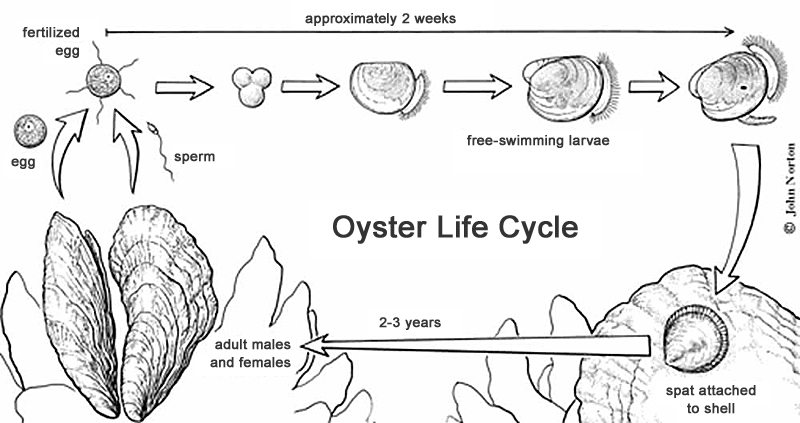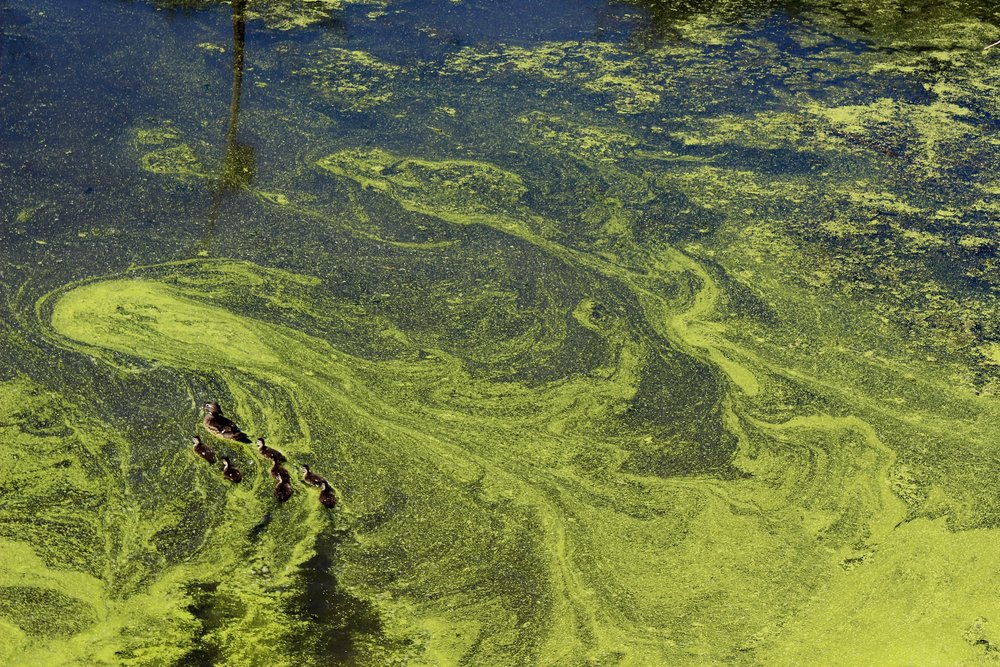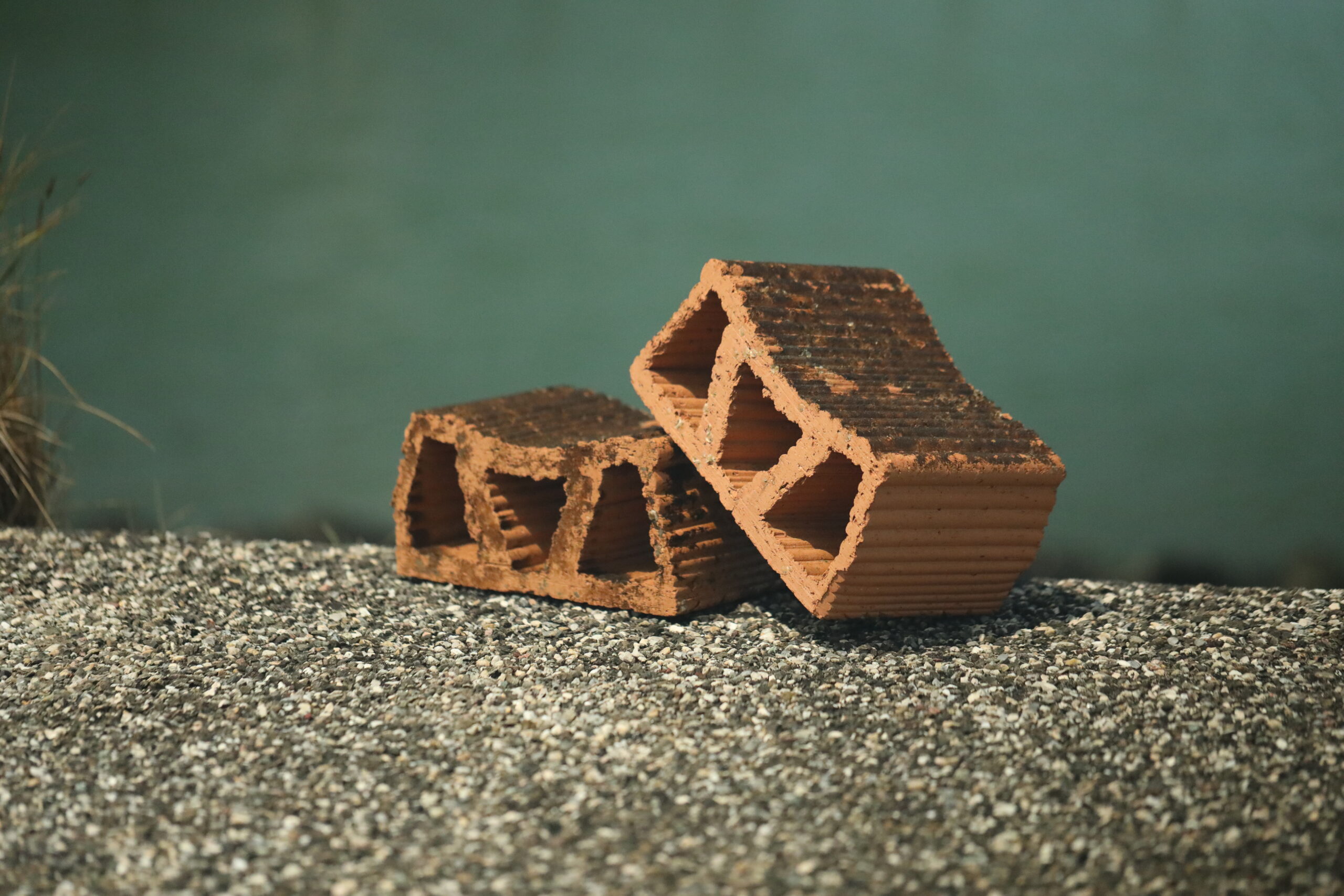Oyster restoration is not new. The scientific community has been working hard on restoring these keystone species for the last decades with lots of learnings that got us to where we are today. However, oyster restoration still faces some challenges that had not been overcome, until now.

Image: Oyster life cycle. https://www.pangeashellfish.com/
Did you ever realize that once molluscs attach to a surface as larvae, that will be their home for the rest of their lives? Such an important decision at such an early age! When the ocean was covered by oyster reefs, this wasn’t a problem for oyster larvae. It was always easy for baby oysters to find another nice large oyster shell to attach to and grow.
After centuries of overconsumption and with the current ocean situation, the few baby oysters that are left in the ocean are facing a housing crisis. Each oyster can produce millions of oyster larvae, but there are not enough oyster shells for all of them to settle on. Most of them will end up falling on the deserted sea floor where they won’t be able to survive, and the reefs left in nature won’t be able to grow and reproduce at a normal rate.
When we talk about substrate, we are referring to a surface for oysters to attach to. Though they are not very picky and they will attach to almost any hard surface, their favorite substrate is, of course, other oysters.
Many oyster regeneration projects used oyster shells as a substrate for oyster larvae to settle on. However, we face a major bottleneck here: there aren’t enough oyster shells to regenerate all the oyster reefs.
Areas where oyster aquaculture is very popular, like the Chesapeake bay, do a great job in oyster shells collection after consumption to be used for restoration projects. However, they are already running low and preparing these shells requires a very cautious process to ensure there aren’t any biosecurity issues and a well-managed logistics chain, which is not possible everywhere.
Since oyster shells are not a scalable solution, other substrates appeared on the market. But because oysters will attach to most materials, most artificial substrates have been designed without considering other factors such as the carbon footprint they generate or if they are disruptive to nature in other ways.
The two previously mentioned challenges lead us to the third one: scalability.
Without enough oyster reefs in nature, and not enough oyster shells to use as substrate or a good alternative to this, oyster restoration projects can only operate on a small scale.
This brings with it another issue because for restored oyster reefs to survive and thrive on their own, a minimum critical mass is required. Oyster restoration projects that bring back small amounts of oysters into nature are doomed to fail in the long term.

Ocean warming and ocean acidification are also factors that make oyster restoration challenging. The changes in the water are occurring at such a rapid rate that species can’t adapt to. Baby oysters are very sensitive to these changes which makes it challenging for them to grow and form hard shells.
As a consequence, their shells become softer and are more vulnerable to their predators, which will be able to quickly deplete the new oyster generation.
Oyster regeneration projects, like most nature conservation projects, often depend on academic or philanthropic funding, and therefore a large part of the efforts need to go towards fundraising instead of the actual conservation or restoration efforts. This, of course, limits the impact of the projects.
Besides that, the raised fund might not be enough to deploy large-scale projects, and might not arrive at the right moment. Unfortunately, nature can not wait.

Mother Reef substrate
The Mother Reef and a financially sustainable model.
At Oyster Heaven, we wanted to remove all the bottlenecks that oyster restoration was facing, so that we could once and for all reach scalability.
We needed a substrate that is low-cost, scalable, natural, biodegradable and that could be deployed pre-charged with baby oysters. The result: The Mother Reef.
But how could we reach financial scalability? We looked at oyster reefs and realised the incredible ecosystem services they provide: water filtration, waste management and biodiversity generation. By offering these services, we would be able to independently fund the restoration of more and more oyster reefs.